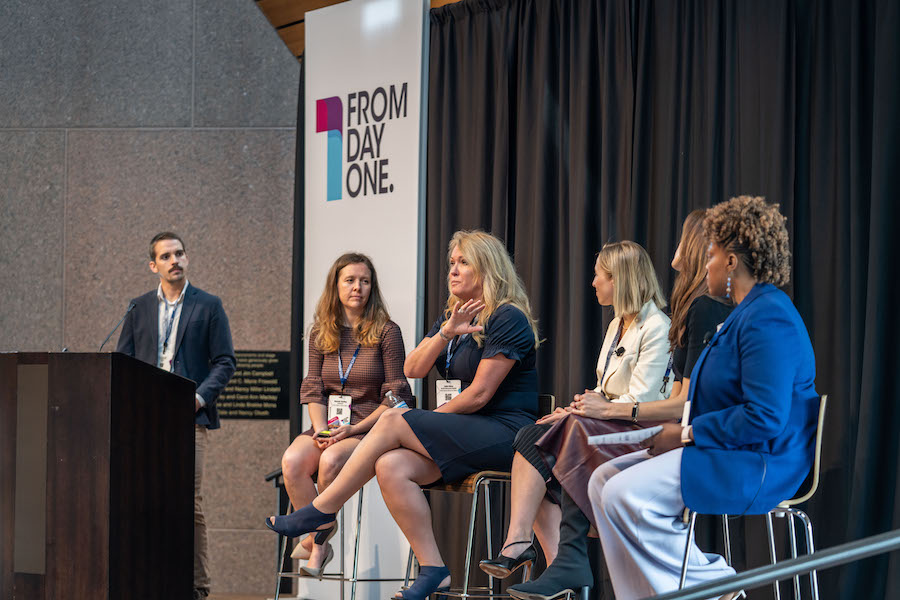Retaining and Motivating Employees by Showing Them Their Work Matters


Whether you’re a human resources professional in the private or public sector, motivating employees goes hand in hand with keeping them. And neither task is an easy one.
A five-person panel recently went through the ups and downs of that process in a discussion titled “Retaining and Motivating Employees by Showing Them Their Work Matters” at From Day One's Minneapolis conference.
It can be tricky to zero in on the intangible but important sense among employees that their work has meaning not only to the company but also the world at large. Part of that equation has to do with having employees buy in to your company’s mission, according to Laura Lorenz, vice president of human resources for 3M’s Transportation and Electronics Business Group.
“The focus is aspirational,” Lorenz said. “We’re the world’s largest provider of N95 masks, and during COVID we kept our prices the same. That was a source of pride for our people.”
In the public sector, keeping workers motivated and happy can be extra challenging. Toni Newborn, chief equity officer and director of human resources for the City of Saint Paul, said that tight budgets and the structure of the city government can be an obstacle.
“We have 15 operating departments that are essentially their own businesses, with 3,000 employees,” Newborn said. “Our challenge was that during COVID, our budget wouldn’t allow people to work from home. So we set up a fund to create stipends for people to make working remotely a little easier–for Internet, for day care. It was a gesture that government employers usually don’t offer.”

A natural outgrowth of retention effort is a benefits package, and as surveys have shown, the one most sought after among employees is one that provides help in having and caring for a family.
“When people talk about work/life balance, what they usually mean is work/family balance,” said Jeni Mayorskaya, founder and CEO of Stork Club, a company that provides family and fertility-based benefits. “Twenty-five percent of women who give birth quit within a year. It will happen if they don’t get the support they need at work. They’ll put their family first.”
Another obstacle in the way of attracting and keeping employees can come from above, according to Hannah Yardley, chief people and culture officer for Achievers, a Toronto provider of employee voice and recognition solutions.
“I believe more than 40 percent of H.R. leaders don't think their leadership teams are ready to make change,” she said. “Leaders aren’t listening, and if you don’t take action, employees won’t trust you to make the changes they want.”
One method for finding out what employees want is by, yes, asking them. Newborn said that when Saint Paul put together an employee engagement survey not long ago, a city employee of some 45 years said it was the first one he’d ever seen. “We didn’t know how important it was for employees to take ownership of city policies,” she said.
One important thing to note is that there is no one-size-fits-all solution to attracting and keeping workers.
“Like everything in H.R., there’s no one simple answer,” said Julie Kline, chief human resources officer for North Memorial Health. “There’s no, ‘Oh, just offer better benefits.’ With COVID, we needed to look at what would motivate our employees. And for them, it was providing a solid foundation. It doesn't sound exciting. But the reality for us was that we really had to look at how we could provide them with stability in their roles.”
Dan Heilman is a Minneapolis-based journalist.
The From Day One Newsletter is a monthly roundup of articles, features, and editorials on innovative ways for companies to forge stronger relationships with their employees, customers, and communities.